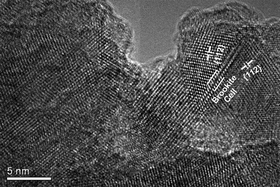The role of brookite in mechanical activation of anatase-to-rutile transformation of nanocrystalline TiO2: An XRD and Raman spectroscopy investigation†
Abstract
The mechanism of phase transformation in nanocrystalline TiO2 powders at ambient temperature during


 Please wait while we load your content...
Please wait while we load your content...